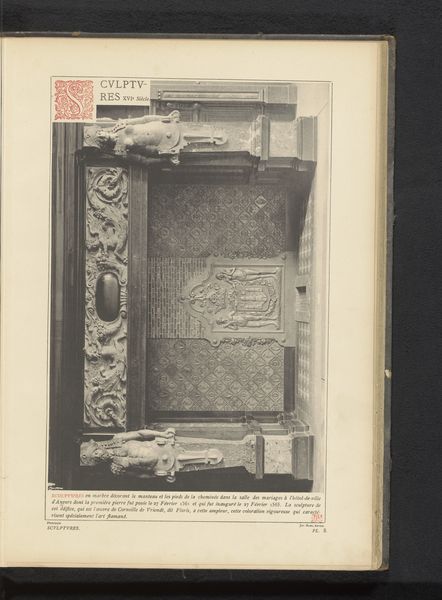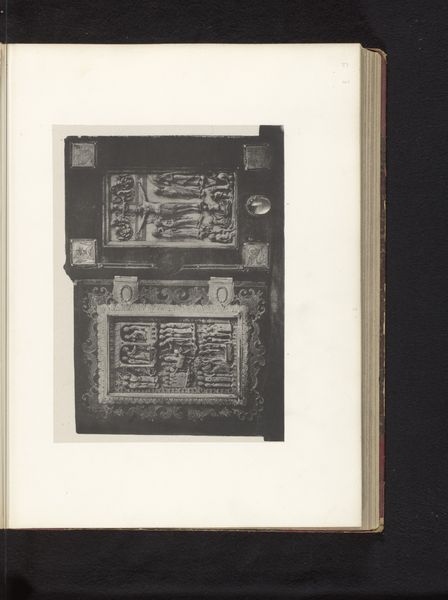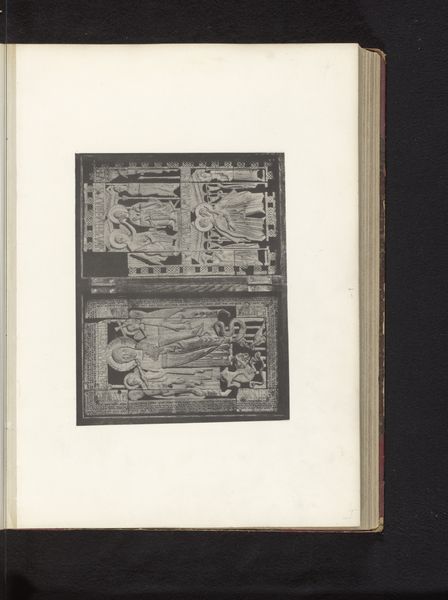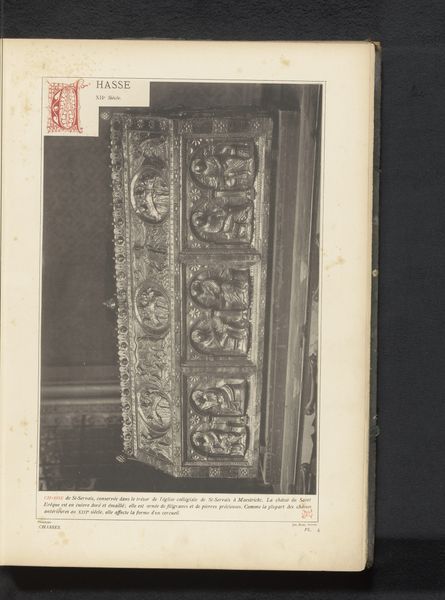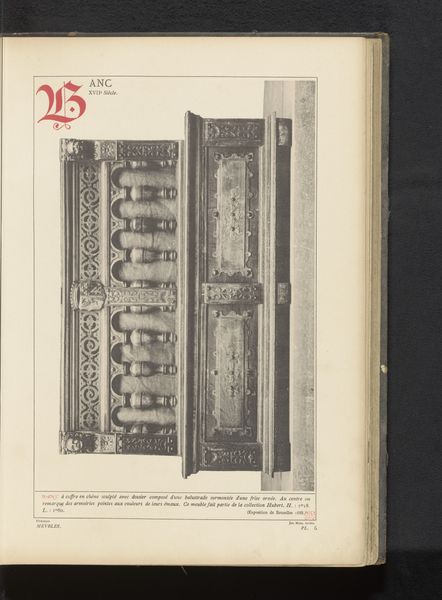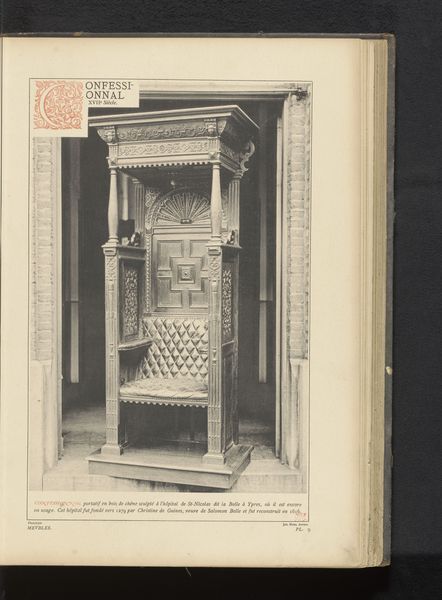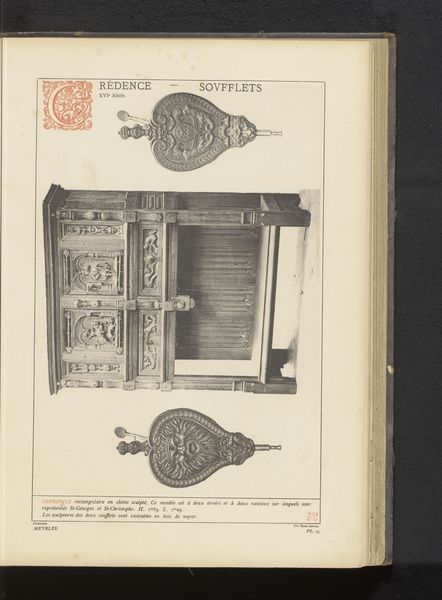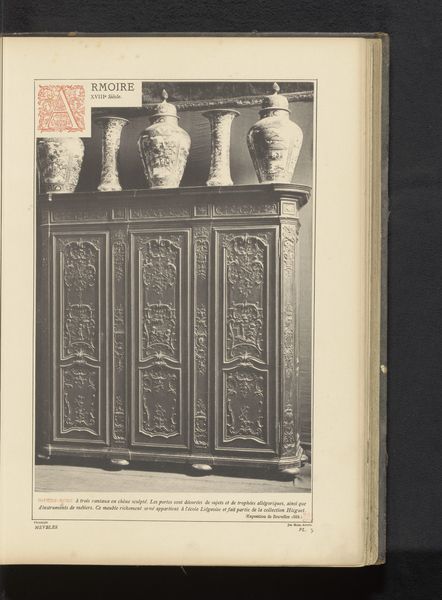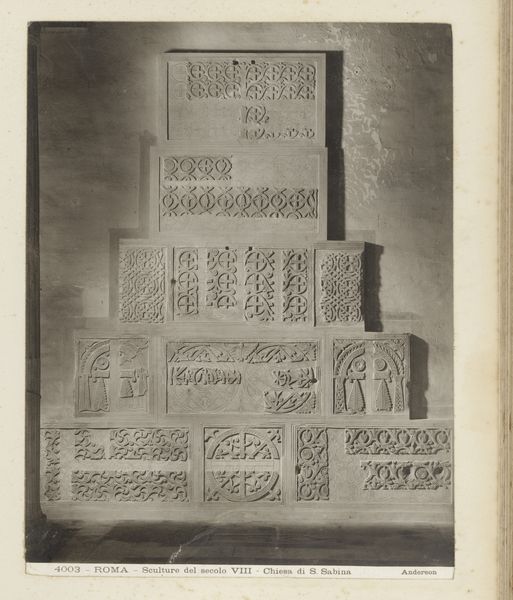
carving, photography, wood
#
carving
#
photography
#
wood
#
genre-painting
#
decorative-art
Dimensions: height 342 mm, width 230 mm
Copyright: Rijks Museum: Open Domain
Editor: Here we have a photograph of a decorated oak cabinet, dating back to before 1887. The intricate carvings immediately catch the eye. What do you see in this piece, with all of its symbols? Curator: Well, immediately my eye is drawn to the fact that the wood is clearly a carrier of memory. We see a blend of geometric patterns interspersed with what seem to be scenes of daily life, maybe even a hunt of some sort. The objects displayed on top, busts and small figural groupings, seem to act almost like ancestral guardians. Are these conscious choices do you think, intended to communicate status and lineage, almost like a family crest, literally carved into the very wood used for domestic storage? Editor: That's a compelling idea, turning the cabinet into a sort of family tree made of wood! It's more than just functional, it becomes a statement. The carvings are very interesting too. Are there common symbols that were often repeated in these decorative works? Curator: Absolutely! Notice the repeated motifs, those could easily reference established traditions within genre painting. When motifs appear like that, think of them as a common cultural shorthand that carries meaning beyond the purely decorative, but these visual connections must be easily interpreted for them to function this way. Now, look at how those motifs are laid out, are they perfectly symmetrical, for example, or could that tell us something too? Editor: I hadn't noticed that the design isn't perfectly symmetrical before, so does it convey how, despite these grand displays, family stories may not always present the whole truth? Curator: Exactly. We should always consider, what narratives are explicitly depicted and what are unconsciously conveyed? It's like glimpsing into their private, domestic world, frozen in time and oak. Editor: Thinking about this cabinet in this way has made me look at it quite differently. It's fascinating how an everyday object can be a container of symbols and memory, all at once. Curator: Indeed. The deeper we look at the surface, the more we perceive below it.
Comments
No comments
Be the first to comment and join the conversation on the ultimate creative platform.

